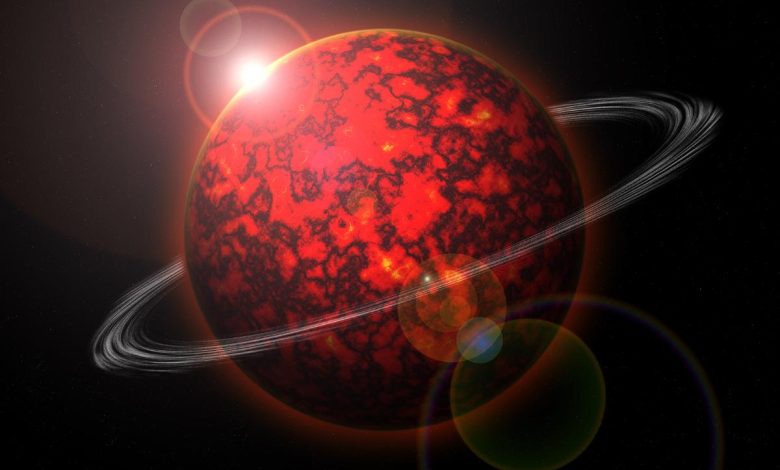What made this planet a hellhole?

In 2004, astronomers discovered 55 Cancri e, known as Janssen, an exoplanet orbiting excessively close to its star. In a new study, scientists provide some answers to explain this position which makes Janssen a hellish world.
If the discovery of super-Earth type rocky exoplanets, that is to say slightly more imposing than our Planet, is each time a notable event, this does not mean that their surface presents conditions close to those that we know. There is one, in particular, on which no one would like to live or could, for that matter.
55 Cancri e, nicknamed “Janssen”, was discovered in 2004. massmass similar to that of NeptuneNeptunei.e. 8 times more massive than the Earth and 2 times larger, Janssen is the first exoplanetexoplanet of which the transittransit in front of his starstar was observed directly from Earth. The astronomersastronomers quickly noticed that this planet had something unique. Far from being a potentially habitable world, Janssen turns out to be rather a veritable hell. And for good reason: it orbits its star just 2.5 million kilometers away, a ridiculously short distance. By way of comparison, Mercury, which is the planet closest to the SunSun in our Solar systemSolar system, orbiting at 46 million kilometers. A year on Janssen only lasts 18 hours. Another consequence is that its surface must resemble an ocean of washwash and its interior could be filled with diamonds!
A planet that is not in its original location
By analyzing the orbit of the planet more closely thanks to the spectrometerspectrometer of extreme precision (Expres) of the observatory Lowell in Arizona, scientists realized that it gravitated at the level of theequatorequator of its star, named Copernicus. The other planets in this system, however, all show entirely different orbits, an observation that quickly led scientists to believe that Janssen was probably not in his original location. The planet would thus have formed in a different orbit, more distant and therefore colder, before gradually migrating towards its star. As it got closer, the gravitational pull of Copernicus would then have changed the shape of Janssen’s orbit. But why this move?
A binary system that pushed Janssen into the arms of Copernicus
The Copernicus planetary system presents certain specificities to be taken into account to answer this question. It is indeed composed of five exoplanets which orbit around a star of the main series, or dwarf stardwarf star (the most frequent category of stars in the universe). But Copernicus is part of a binary systembinary systemwhich features another red dwarf star.
In this new study, published in Nature Astronomy, the scientists therefore suggest that the proximity of this red dwarf would have displaced Janssen from its initial orbit. Little by little, she would then have come under the dominant influence of Copernicus. However, it turns on itself. The centrifugal forcecentrifugal force which results in the star being slightly flattened at the poles and bulging at the equator. It is this asymmetry which would have, by effect of gravitygravityattracted Janssen to finally settle at the Copernicus equator.
Understand the surprisingly flat organization of our Solar System
The study of the orbit of the planet Janssen and the rest of its planetary system is an important step towards better understanding the organization and formation of our own solar system. Because the latter has a particularity: it is surprisingly flat.
All the planets of our solar system indeed orbit on the same plane, within a few degrees. This may seem normal given the fact that all the planets formed from the same disc of gasgas and dust. And yet, the detection and observation of other multiplanet systems show us that, on the contrary, it is rather frequent to find planets orbiting around their star on different planes, like the Copernicus system.
Could the organization of our solar system be an exception? To answer this question, Zhao and his colleagues from Flatiron Institute’s Center for Computational Astrophysics of New York are now planning to work on other planetary systems, in the hope of finding one similar to ours.












